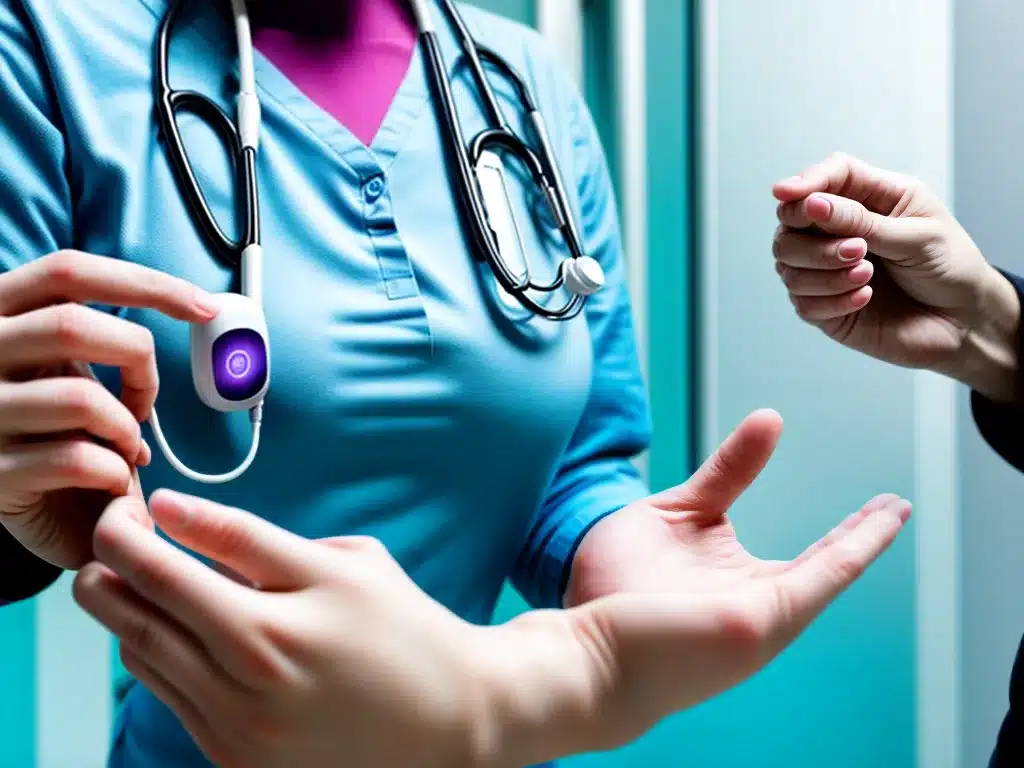
IoT in Healthcare: The Latest Breakthroughs
The Internet of Things (IoT) is transforming healthcare in exciting new ways. As an emerging technology, IoT allows medical devices and applications to connect and share data, enabling more efficient patient care and medical insights. In this article, I will explore some of the latest IoT breakthroughs in healthcare and how they are improving patient outcomes.
Improved Chronic Disease Management
IoT devices and wearables allow patients with chronic diseases like diabetes, asthma, and heart disease to better manage their conditions at home. For example, connected glucose monitors and insulin pumps can automatically log blood sugar data and adjust insulin doses for diabetics. This prevents patients from having to constantly log their own readings and self-administer medication.
Similarly, heart rate and blood pressure monitors that connect to a patient’s smartphone allow their vital signs to be continuously tracked. Any dangerous fluctuations can be caught early before an emergency occurs. Doctors can also access the data remotely to gain insights and adjust care plans when needed. This constant connectivity and data sharing enables earlier interventions and reduced hospital visits.
Enhanced Elder Care and Assisted Living
For elderly patients requiring assisted living or in-home care, IoT devices provide an added layer of safety and security. Sensors throughout the home can detect movement and monitor activities of daily living. If unusual periods of inactivity are noticed, such as a patient not getting out of bed or moving around the house, caregivers can be alerted to check in.
Wearable panic button devices allow patients to call for help if they have fallen or are in distress. Tracking devices can also remind patients to take their medication and help locate them if they wander off. By proactively monitoring seniors, IoT technology enables them to maintain independence while ensuring their safety.
Asset and Staff Management Optimization
IoT offers hospitals and clinics greater insights into asset and staff utilization to improve workflows. Connected devices can track the location of wheelchairs, defibrillators, and other critical equipment. This allows assets to be located quickly when needed for patient care.
Staff wearables allow administration to see how clinicians are moving about the hospital which can help identify areas of over or under-staffing. Patient queues and wait times can also be monitored and optimized. By improving asset and human resource management, patient care and satisfaction is enhanced.
Predictive Analytics and Early Intervention
Perhaps the most exciting application of IoT in healthcare is utilizing patient data for predictive analytics. Historical IoT sensor data from smart watches and fitness trackers can detect inconsistencies or risks. Patients at risk of heart failure based on increases resting heart rate can be identified before an emergency occurs. Machine learning algorithms applied to data repositories can gain new medical insights not previously detectable through traditional reactive treatment.
The ability to foresee risks and intervene early is game changing. Analytics based on comprehensive IoT data enables precision medicine tailored to each patient’s risks and needs. This prevents disease exacerbations, avoids unnecessary treatments, and ultimately saves lives.
Conclusion
The examples above demonstrate just some of the transformative impacts IoT is having within healthcare. As the technology expands and becomes ubiquitous, there will be limitless potential applications to enhance patient outcomes, improve safety, reduce costs, and enable better decision making through data. While privacy and technical considerations remain, the benefits for modernizing our healthcare system through smart connected devices are profound.












